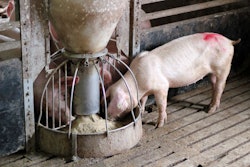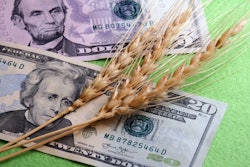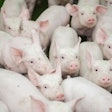
Rice may replace other expensive cereals, negate the need for lactose and expensive proteins, and even reduce diarrheas.
Rice flour is a mycotoxin-free ingredient produced by controlled granulation of high-quality broken rice.
Broken rice is a difficult raw material not only because of the inherent large variability from batch to batch, but also because it is difficult to grind properly (very hard and small). Thus, broken rice is not usually recommended for piglet diets.
Rice, in general, has been investigated as a substitute for corn in piglet diets, with excellent results, but it has never really been adopted by the feed industry. The first concern has always been its availability, especially in EU and U.S., and the second one remains its price. However, it is now possible to source quality rice flour in the EU to replace certain cereals and even reduce feed cost if such cereals are, for example, flaked oats. So, this innovative ingredient is worth our further consideration here.
The data in Table 1 are from a Spanish study where it was demonstrated very clearly that rice (raw or cooked) can outperform even cooked corn. The main reason why rice flour improves piglet performance is its starch and protein characteristics. The rice starch granules are very small (2-8 microns) compared with those of corn (15-25 microns), and comparable to oat starch granules (3-10 microns). Rice starch is thus highly digestible (99% at terminal ileum) compared with corn (89%) and oats (97%) starch. Most high-quality piglet feeds contain about 10% to 20% rolled oats, and these could easily be replaced by rice flour.
Control of diarrhea
A meal of boiled rice was our childhood cure for diarrhea. It was believed this was due to the compact nature of rice starch and low fiber that firmed up stool. But, apparently there is more than that in rice. A study in Lancet reported that rice water was more effective than an electrolyte solution at reducing the number of bowel movements in babies with acute diarrhea. Another study indicated that rice water and a rice electrolyte solution were superior to a glucose electrolyte solution in reducing the frequency and volume of stool output and in producing weight gain, again in human babies. Finally, a further study revealed that solutions containing rice solids were effective in the rehydration of infants with acute diarrhea, and they decreased stool output and promoted greater absorption and retention of fluid and electrolytes than did a glucose-based solution.
Also in piglets, several studies showed that including rice in the diet could be protective against various diseases, such as postweaning colibacillosis or swine dysentery. Multiple mechanisms have been hypothesized to explain this unique role of rice in the fight against diarrhea, but practice shows that it works – also for piglets.
Lactose replacement
Can we replace lactose with starch? This is a question that has puzzled nutritionists for a long time. Short answer: no; long answer: it is complicated. Let me explain.
So far, we have been trying to replace lactose with corn starch. Lactose is a simple sugar with just two molecules (glucose+galactose). Lactose is easy to digest not only because piglets are accustomed to digesting it, but also because it requires the separation of just two saccharides. Corn starch is much more complicated. Not only it is composed of long and branched chains of glucose, but it is packed into very large granules that reduce enzyme accessibility. In contrast, rice starch granules are small, and rice starch digestibility is rapid and complete.
A commercial study tested rice flour against milk whey powder. Although this study lacked a negative control, we all know piglets respond well to whey supplementation. In the end, results indicated that replacing whey with rice flour negated the need for lactose. Does this mean that rice starch can replace lactose? This merits further verification, but similar studies with calves showed this might be the case.
Rice palatability
Piglets prefer clean and soft flavors. Think how milk tastes so faintly and yet piglets crave it. Piglet feeds based on high levels of milk are successful, but too expensive and a bit laxative. Thus, starch from cooked or raw cereals provides the bulk of energy, but as starch comes along with other components, overall cereal taste is key in feed design.
Most piglet feeds are based on corn. Some nutritionists consider wheat and barley as having too many undesirable components, and most agree that oats improve palatability. Here, the issue of palatability is confounded by the presence of anti-nutritional factors.
That rice flour is a highly palatable ingredient for piglets is well known, at least among nutritionists of the Far East. Another Spanish research report, shown in Table 2, revealed that in a taste preference test, rice outperformed even cooked corn, which is considered as one of the most palatable ingredients.
Another viable ingredient
Rice is a unique cereal in that it contains very little, if any, undesirable components when it comes to piglet feeding. Availability and price have been the main issues prohibiting its use in piglet formulas in the past. Globalization has brought rice flour to the EU and the U.S. and nutritionists have now one more gut-health-friendly ingredient to work with in the post-antibiotic era.


















